Rainwater harvesters
Simple and sustainable, our harvesters give you 24/7 access to rainwater that can be used to flush toilets, water lawns, wash vehicles, and more.
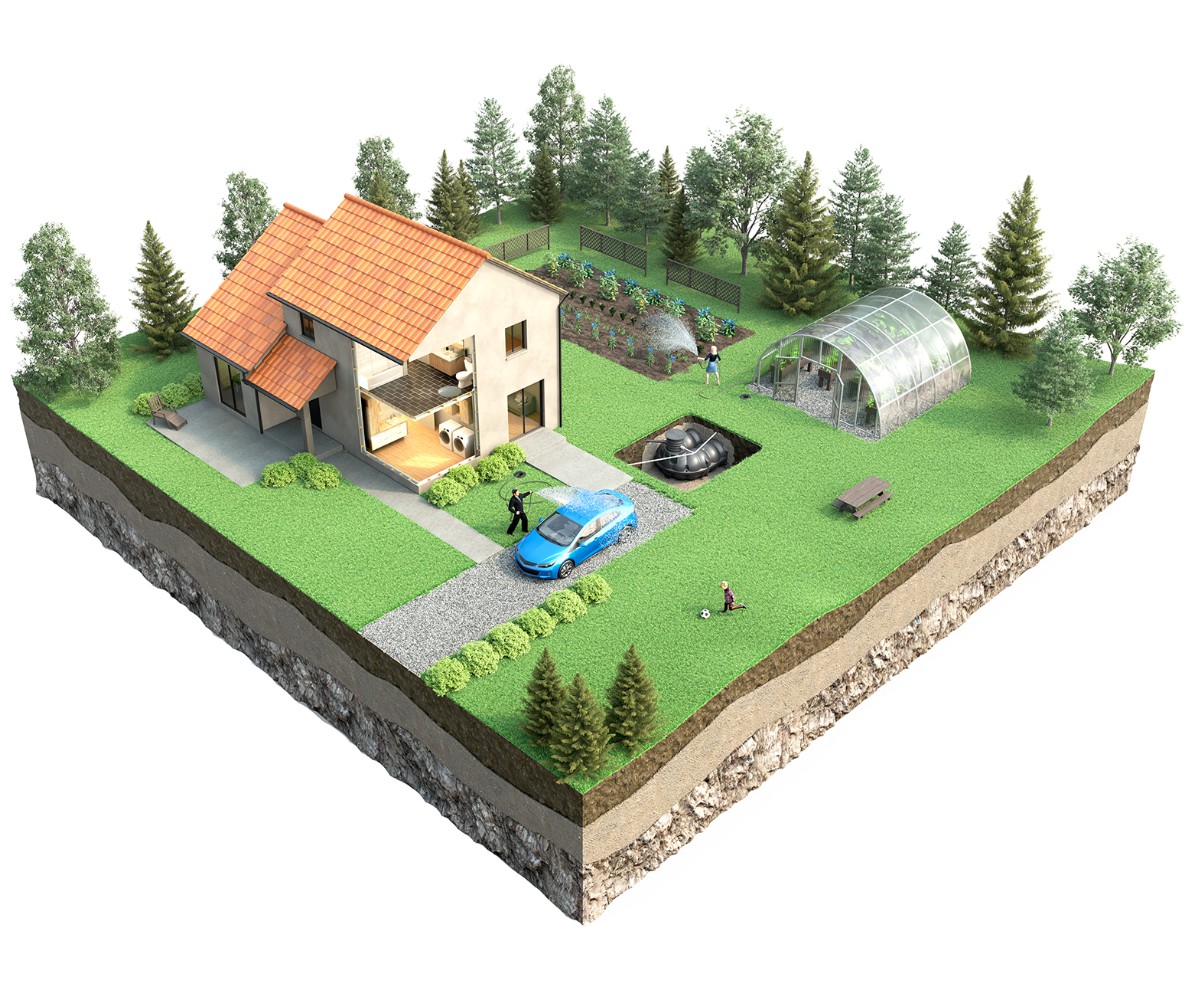
Eco-responsible
Eco-responsible
Versatile
Versatile
Easy to install
Easy to install
Cost-effective
Cost-effective
What is a rainwater harvesting system?
Rainwater harvesting is the collection and storage of rainwater for non-potable use.
Harvested rainwater is most often used to flush toilets, clean clothes, water gardens, fill pools, and wash vehicles.
Due to this variety of uses, rainwater harvesters can cut household drinking water use by up to 50%. In commercial buildings, the reduction in drinking water use can be as high as 70%.
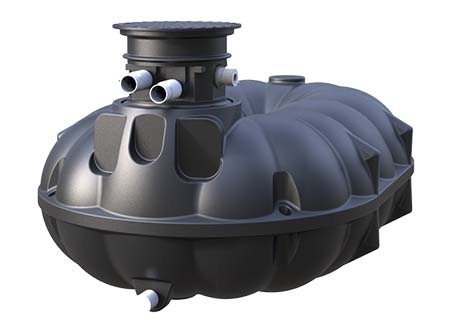
The Rewatec rainwater harvester makes these savings a reality. It is a sustainable and easy-to-install solution that can be used for single-family homes as well as commercial, industrial, or municipal buildings.
Our system is designed for year-round use, providing you with a reliable and free water source at any time.
We offer a complete range of models that includes rainwater storage tanks with capacities from 2,000 to 75,000 L.
Typical applications
- individual homes
- apartment buildings
- commercial and office buildings
- environmental projects
- public gardens
- industrial buildings
- firefighting systems
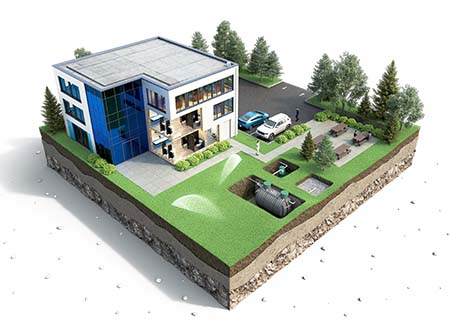
Why harvest rainwater?
According to an analysis by the European Environment Agency in 2018, the average person uses 144 L of water per day.
This water is treated and distributed by costly municipal supply systems, yet a large percentage of it is for non-potable use. For example, 22% of the water used by the average person each day is for toilets, 10% is for washing clothes, and 8% is for general cleaning.
Collecting and using rainwater helps to conserve drinking water for essential use only. It also saves some of the energy needed to treat and supply potable water.
Just as importantly, rainwater harvesting is a simple and sustainable way to protect our planet's natural resources and sensitive ecosystems. When we harvest rainwater, we limit the damaging effects of runoff and make use of a free resource in our homes and gardens.
Typical uses for harvested rainwater
The following list contains suggestions only. We recommend that you ask local authorities or check local regulations to determine how harvested rainwater can be used in your area.
Indoors:
- flushing toilets and urinals
- washing clothes
- general cleaning
Outdoors:
- watering lawns and gardens
- washing vehicles
- washing patios and driveways
Industrial uses:
- washing vehicles
- cleaning industrial surfaces
- filling fire engines
- irrigation
How do our rainwater harvesting systems work?
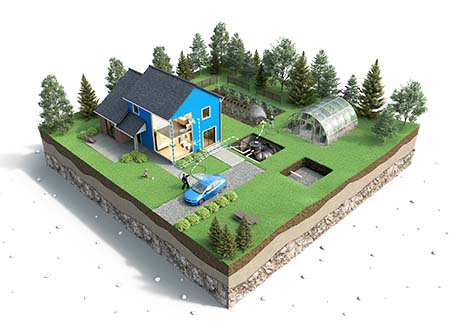
Rainwater harvesting
Rainwater is first collected by gutters (pitched roofs) or a drain (flat roofs). It then flows through a primary filter that prevents leaves, insects, and other debris from entering the system. Filtered rainwater flows into the storage tank.
Storage
Collected rainwater is stored in a tank fitted with a circulation system that prevents water stagnation. In the event of a downpour, the system drains excess water by means of an overflow outlet.
Rainwater use
Rainwater can be used indoors or outdoors, depending on the kit you choose. All our systems are equipped with a pump that provides optimal pressure according to the intended use.
If there is no rainwater in the storage tank, water is automatically supplied from your drinking water source.
A reminder
Whenever rainwater is used, the harvesting system and its components must be clearly marked to avoid cross-connections with your drinking water supply.
Rainwater harvesting system maintenance
Premier Tech recommends that you follow maintenance instructions according to the model installed. Protect your investment, maximise its service life, and maintain your warranty by having your system regularly inspected.
We recommend at least the following maintenance schedule:
- gutters and downspouts: every 6 to 12 months
- filters: every 3 to 6 months
- storage tank: every 12 months
- pumping system: every 12 months
If you need to check the condition of your Rewatec rainwater harvester, please feel free to contact us.
Rewatec rainwater harvester warranty
For more than 25 years, we have developed sustainable, long-lasting products that make a difference for our clients, our professional partners, and our planet.
Storage tanks for the Rewatec rainwater harvester come with a warranty of up to 10 years, provided that all instructions are followed for system installation and use.
Electromechanical components have a 2-year warranty for all models.
Available models
We offer a Rewatec rainwater harvester model adapted to each specific need.
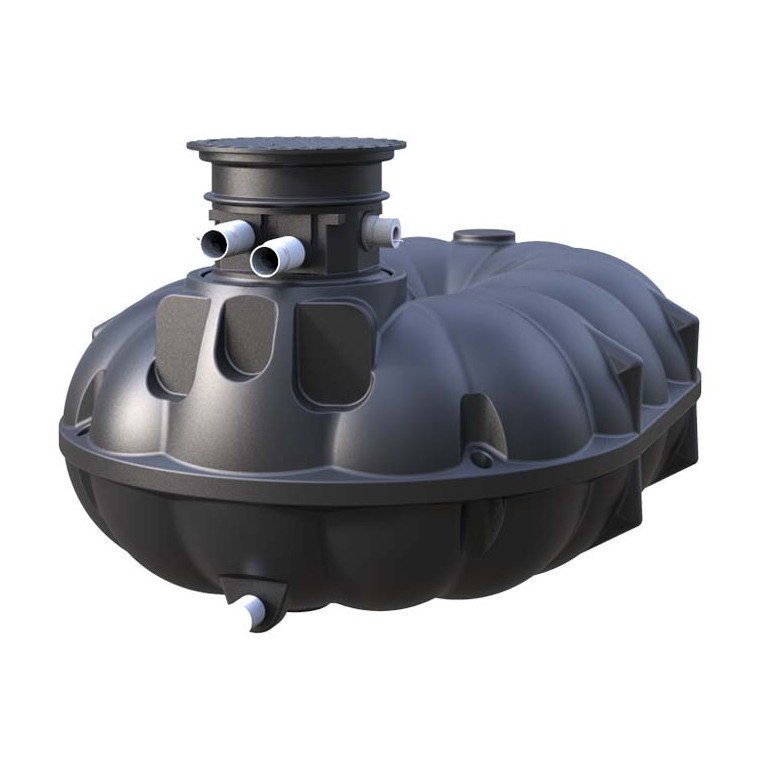
- ready to install
- patented design inspired by nature
- low-profile tank for easy installation
- built-in pumping kit
- capacity up to 10,000 L
- warranty up to 10 years
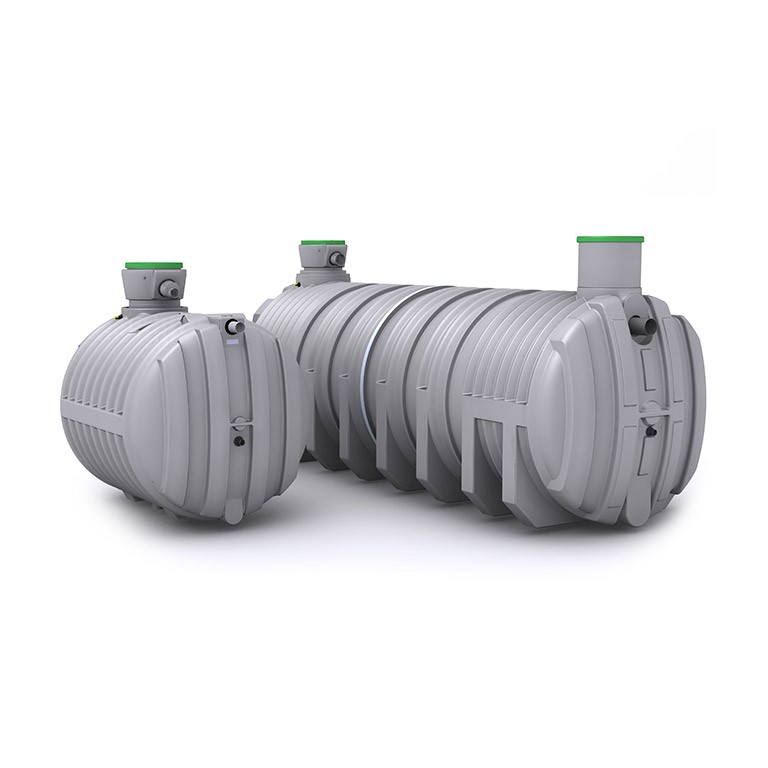
- capacity up to 75,000 L
- ideal for residential and commercial projects
- internal or external pumping kit
- warranty up to 5 years
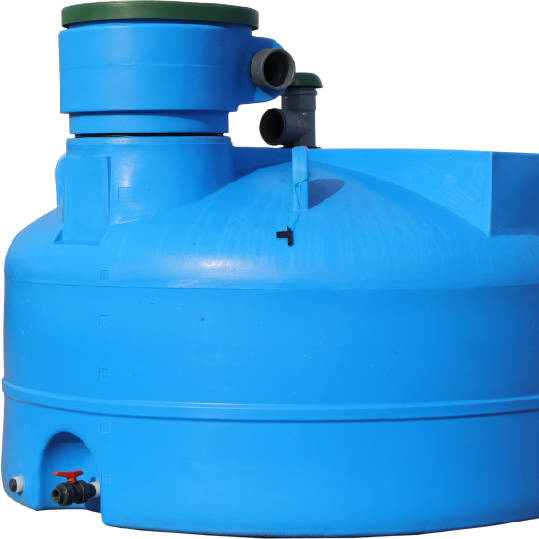
- Surface solution
- Low tanks for easy installation
- Volumes up to 26,000 L
- 5-year warranty

Contact us
Contact our team of experts to learn more about sustainable solutions that improve the environment and our planet. Together we can make a difference.